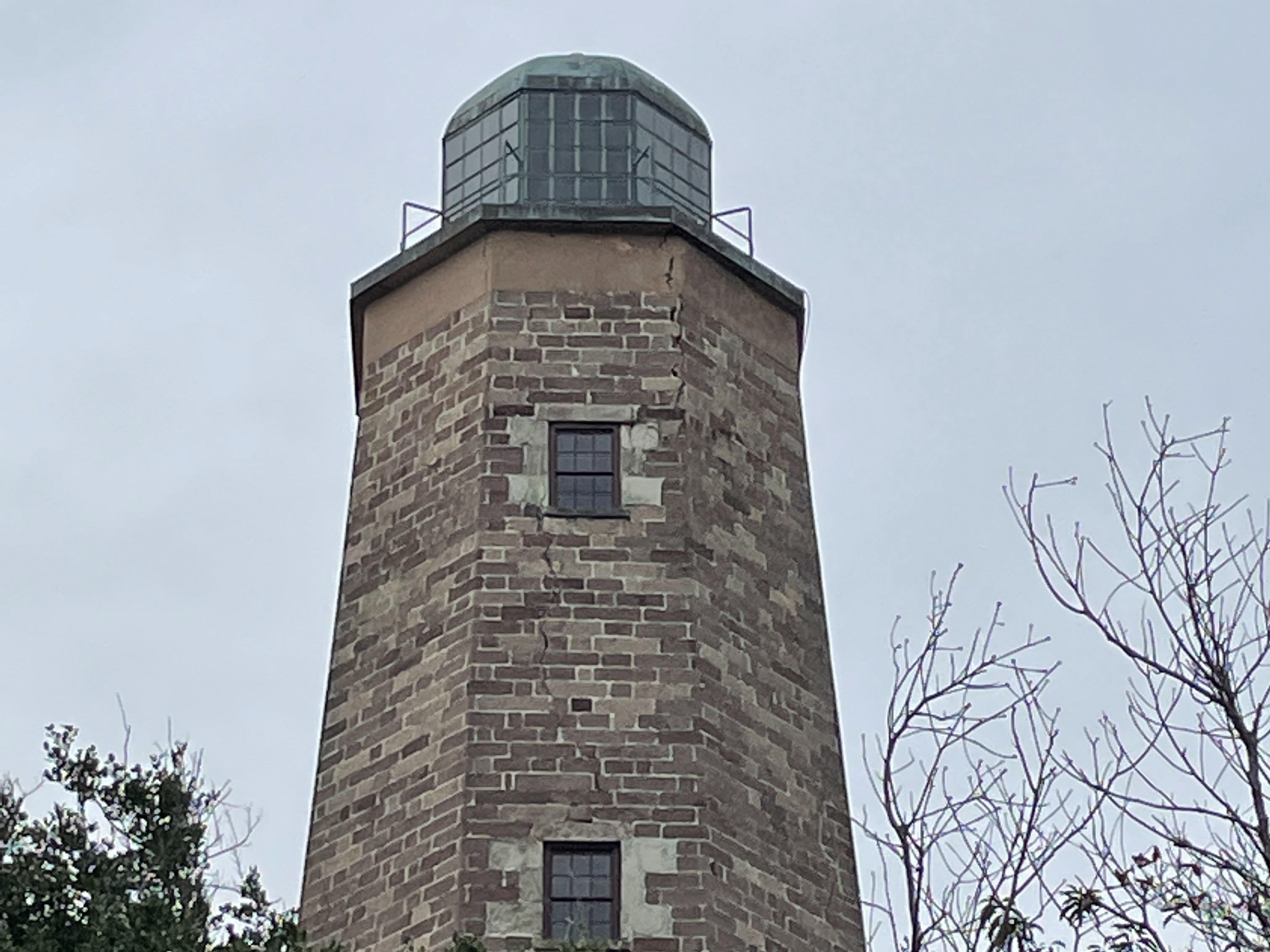On the night of October 10–11, 2024 (CDT), residents of north Mississippi saw an auroral glow because Earth experienced a severe geomagnetic storm triggered by a fast coronal mass ejection (CME) launched from the Sun on Oct 8. NOAA’s Space Weather Prediction Center (SWPC) analyzed the CME at about 1200–1300 km/s and issued a G4 (Severe) geomagnetic-storm watch for Oct 10–11 as the ejecta and its embedded magnetic field swept past Earth. The storm’s intensity was among the strongest of Solar Cycle 25, with global indices reflecting major disturbance (the Dst index reached about −335 nT on Oct 10), conditions capable of pushing the auroral oval far into the mid-latitudes, far enough for Mississippi. NOAA SWPCSpaceWeatherLiveMDPI
Mechanism. When the CME reached Earth, the interplanetary magnetic field it carried oriented southward at times relative to Earth’s field, enabling efficient magnetic reconnection on the dayside magnetopause. This rapidly injected energy into Earth’s magnetosphere, enhancing the ring current and driving recurring substorms. The net effect was an equatorward expansion of the auroral oval, making aurora visible unusually far south. SWPC’s alerts and modeling for Oct 10–11 documented this evolution, and media reports confirmed widespread low-latitude sightings across the Southeast U.S., including Mississippi.
What people saw & why. Under clear skies, observers reported diffuse red and pink glows with occasional green colors produced by oxygen and nitrogen emissions excited by precipitating particles (e.g., green at 557.7 nm and red at 630.0 nm from atomic oxygen, and purples/violets from molecular nitrogen bands). Local outlets and photos documented the display from the Gulf Coast up through east Mississippi, and individual images captured the aurora specifically near Starkville, evidence that the oval reached well into Mississippi that night.
Why it was rare, Mississippi sits far south of the climatological auroral zone, so aurora there generally requires G3–G4-level storms (or stronger). The Oct 10–11 event met that threshold: SWPC’s G4 watch, strong solar activity (including X-class flares from Active Region 3842 earlier in October), and subsequent CME arrival together created a once-in-years opportunity for Mississippi observers. NOAA SWPC+1
In short: A fast CME on Oct 8 drove a severe geomagnetic storm on Oct 10–11, whose southward magnetic field coupling with Earth expanded the auroral oval into the mid-latitudes, producing visible aurora in north Mississippi—an uncommon but well-documented outcome during strong space-weather episodes.
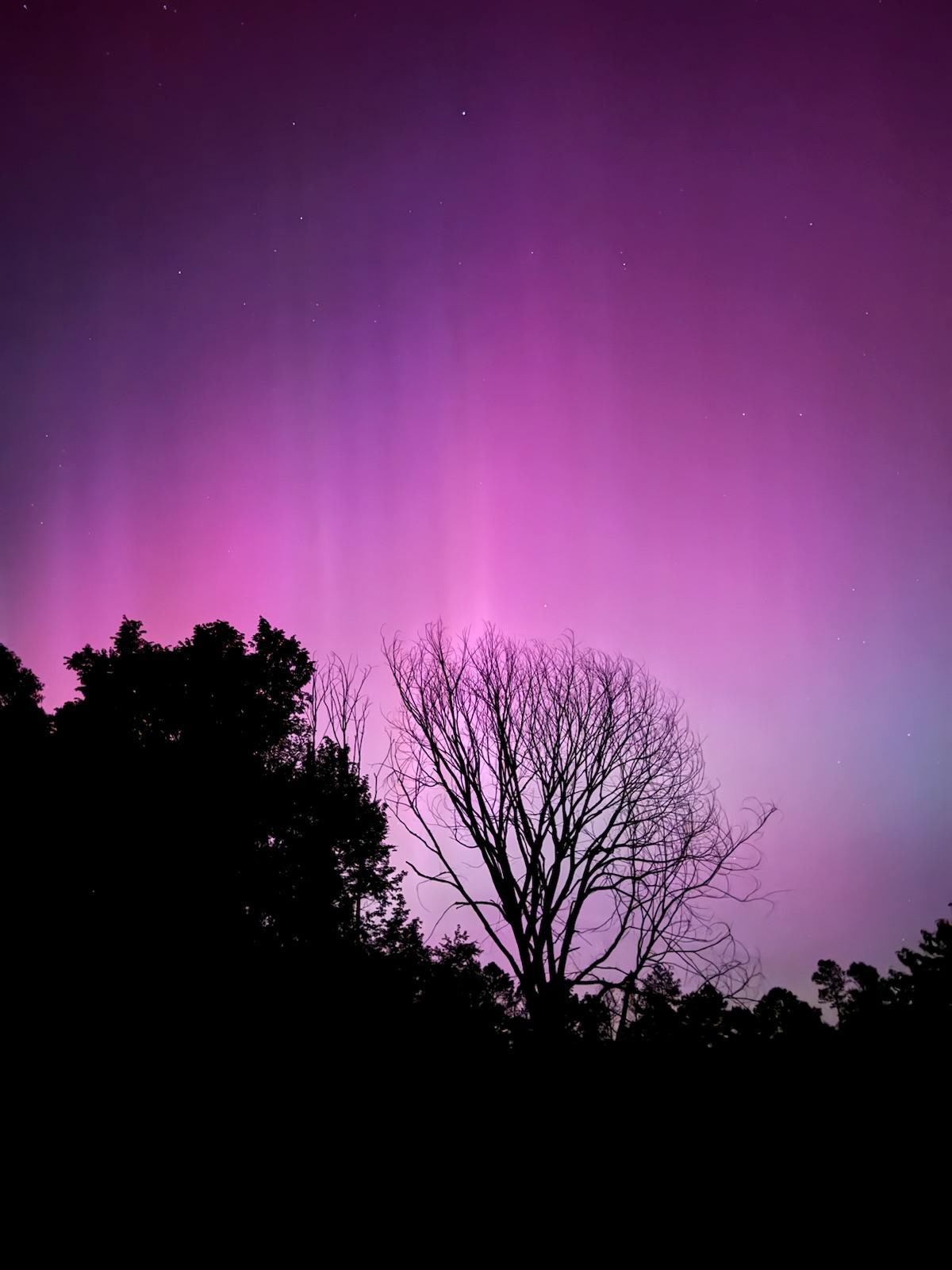
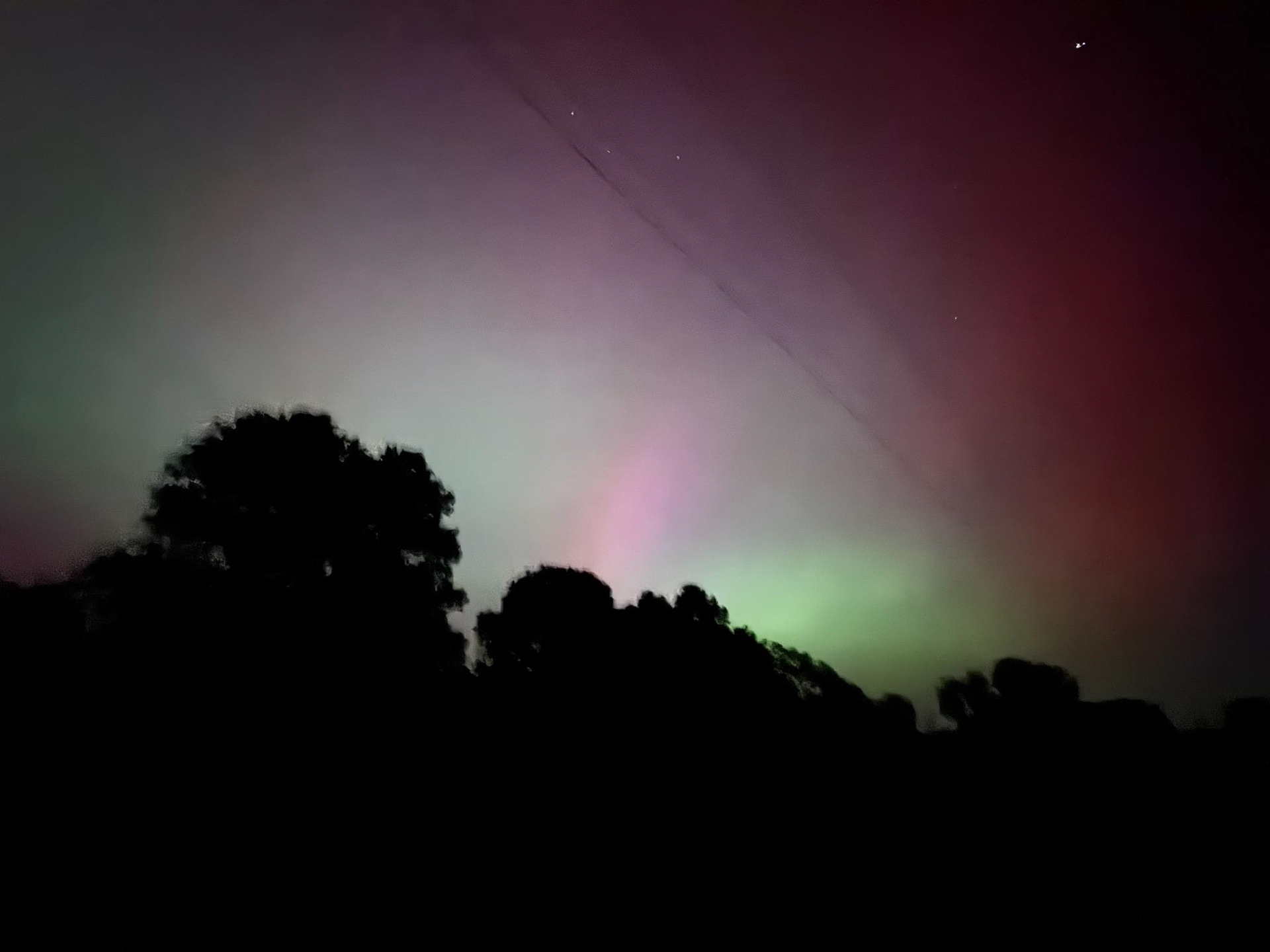
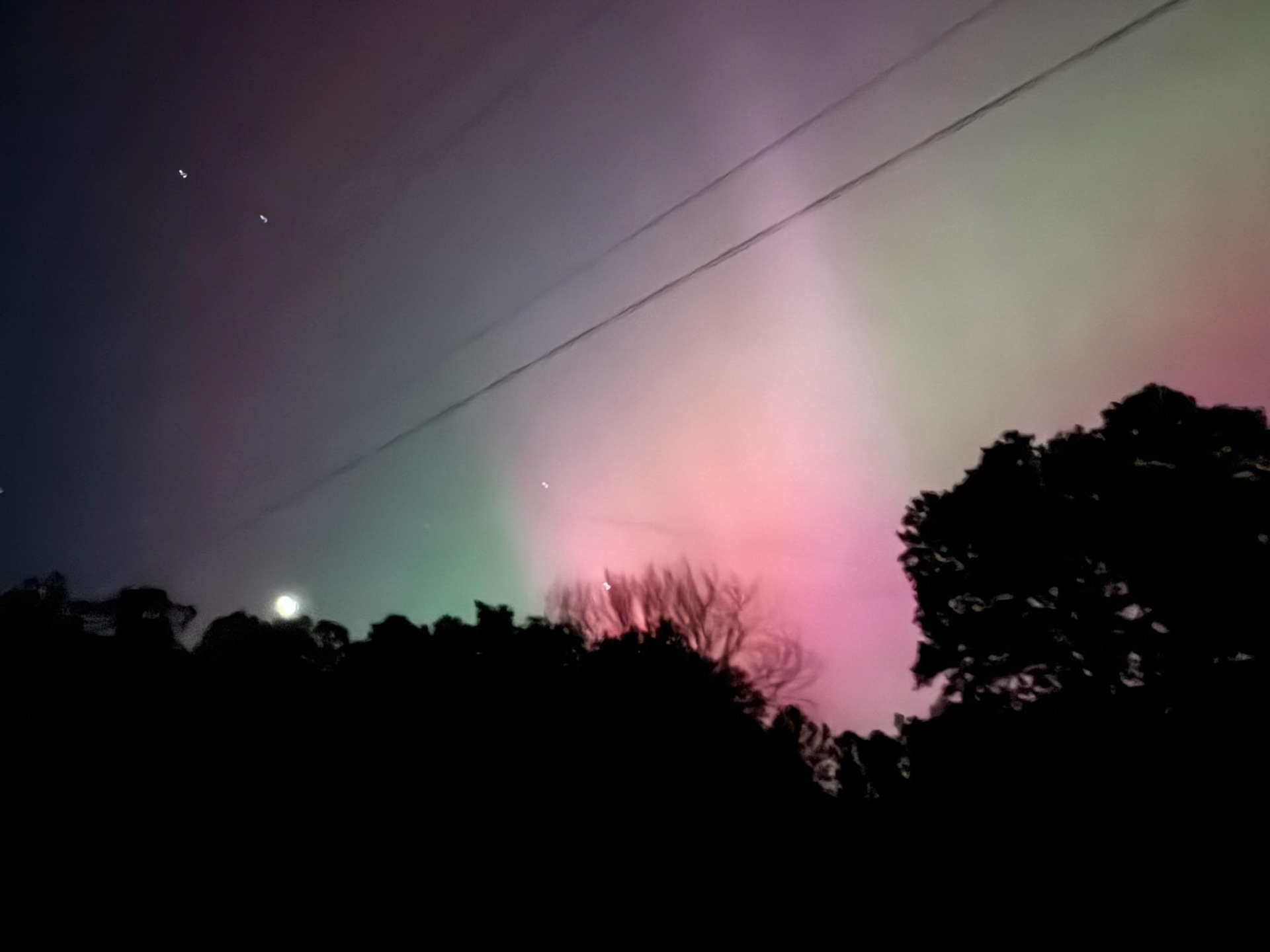
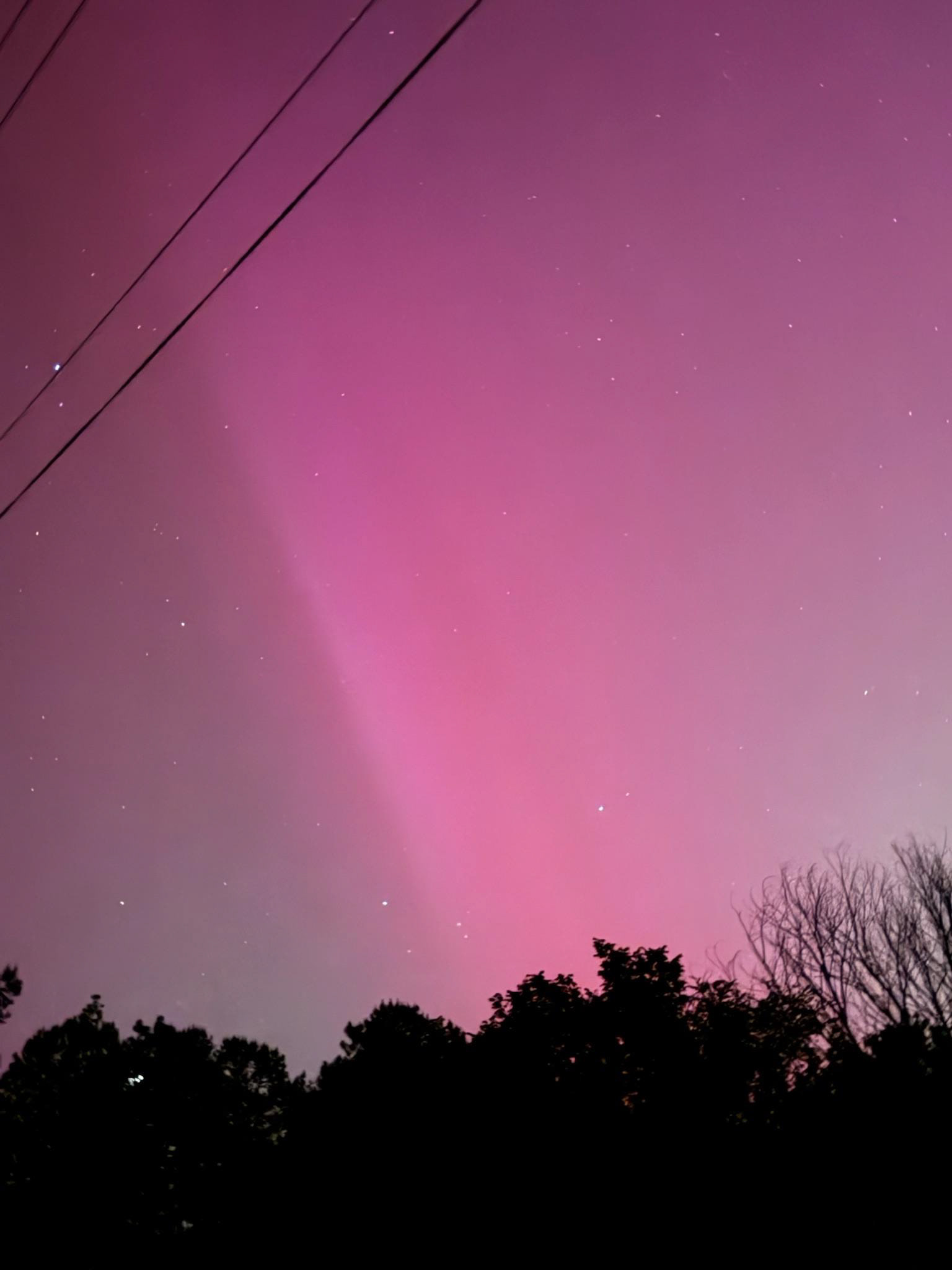
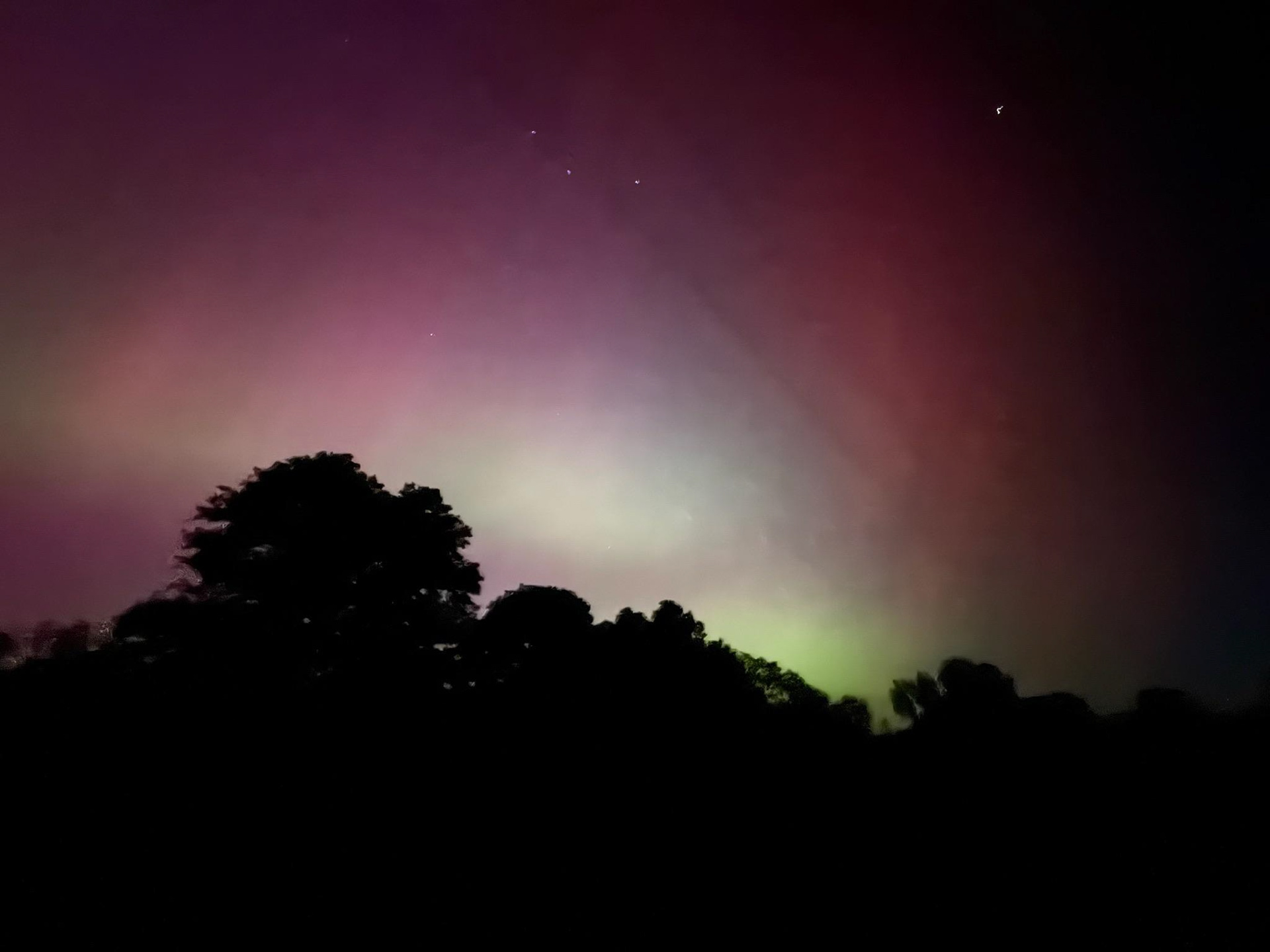

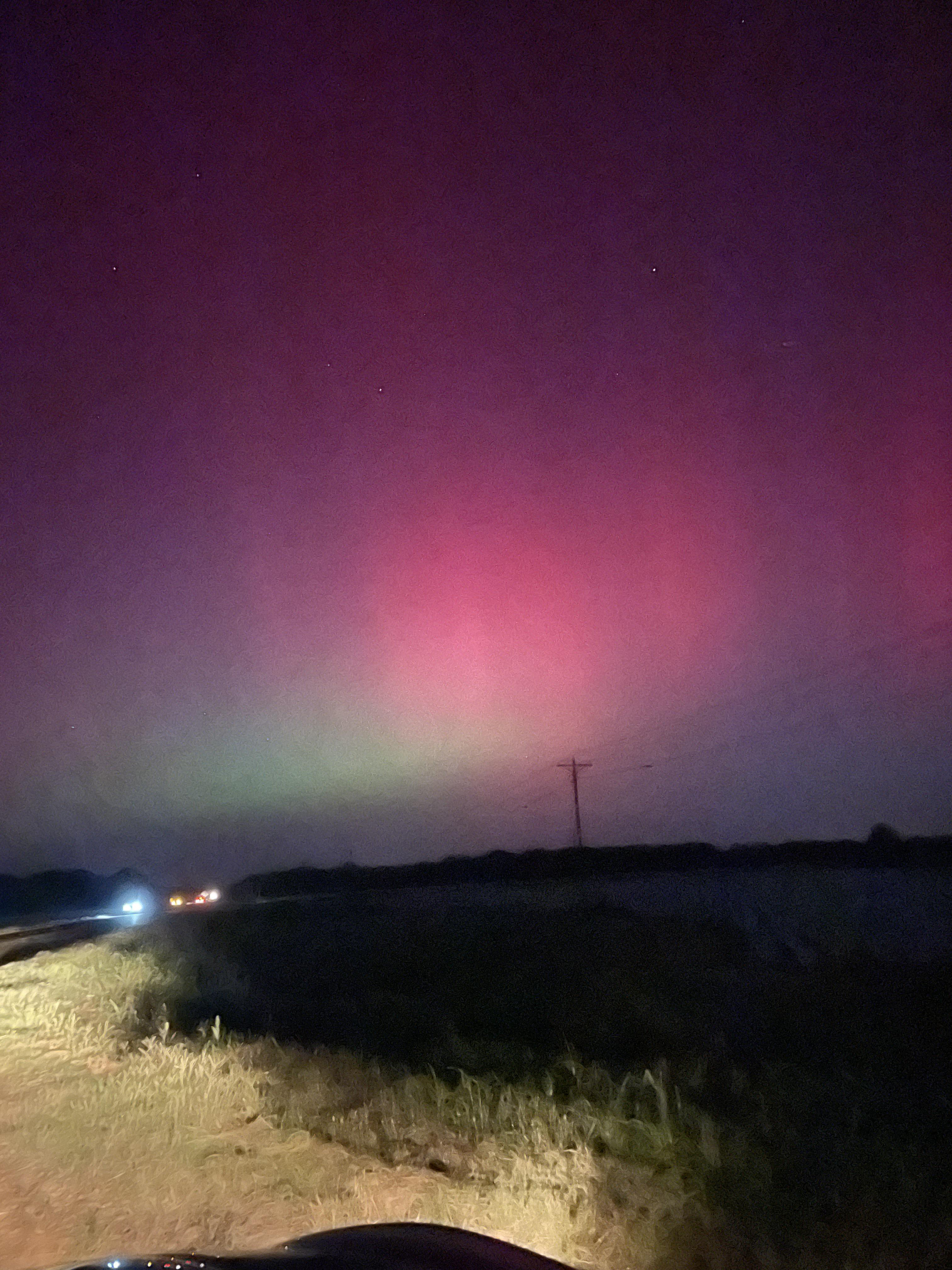
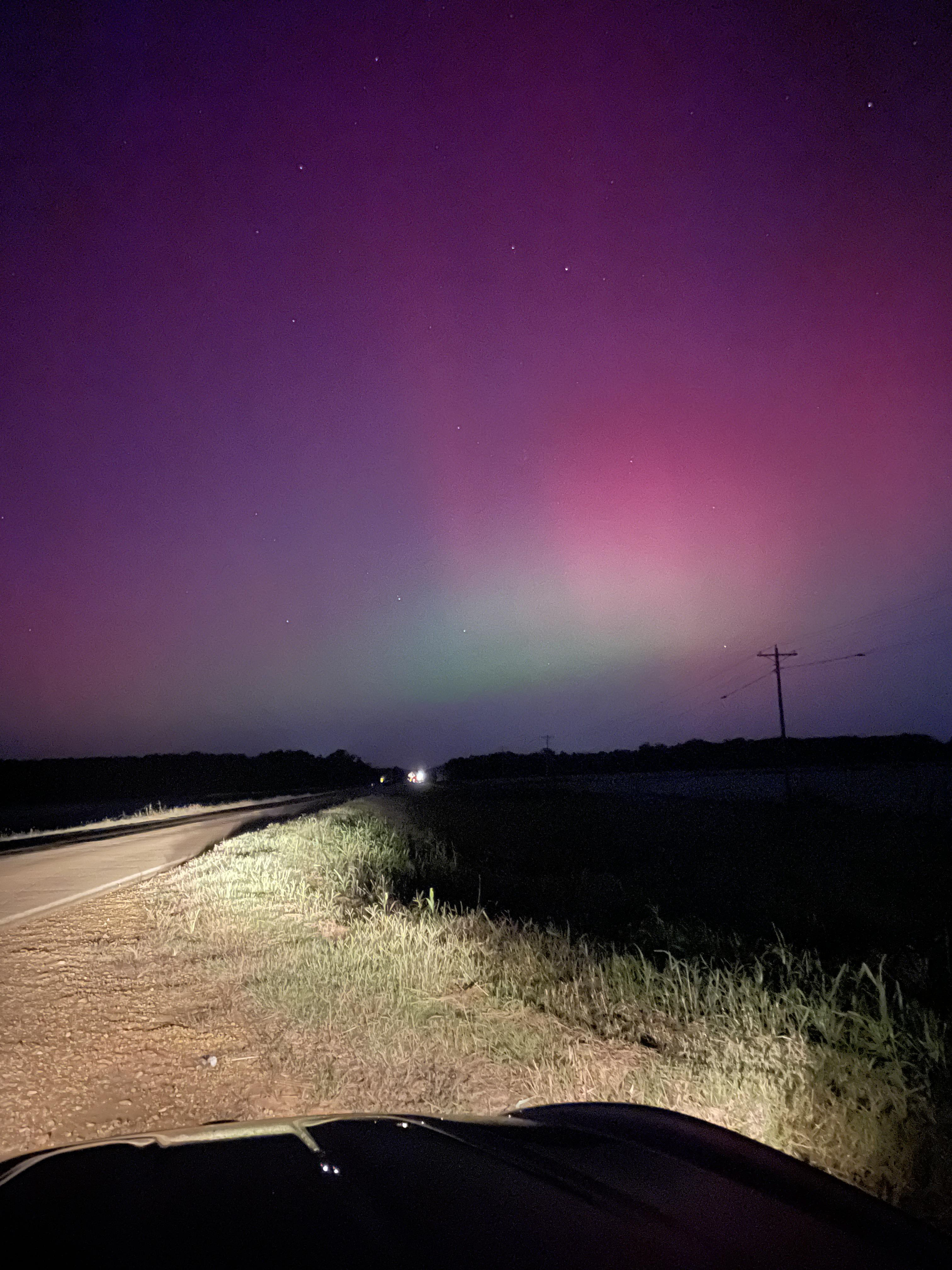
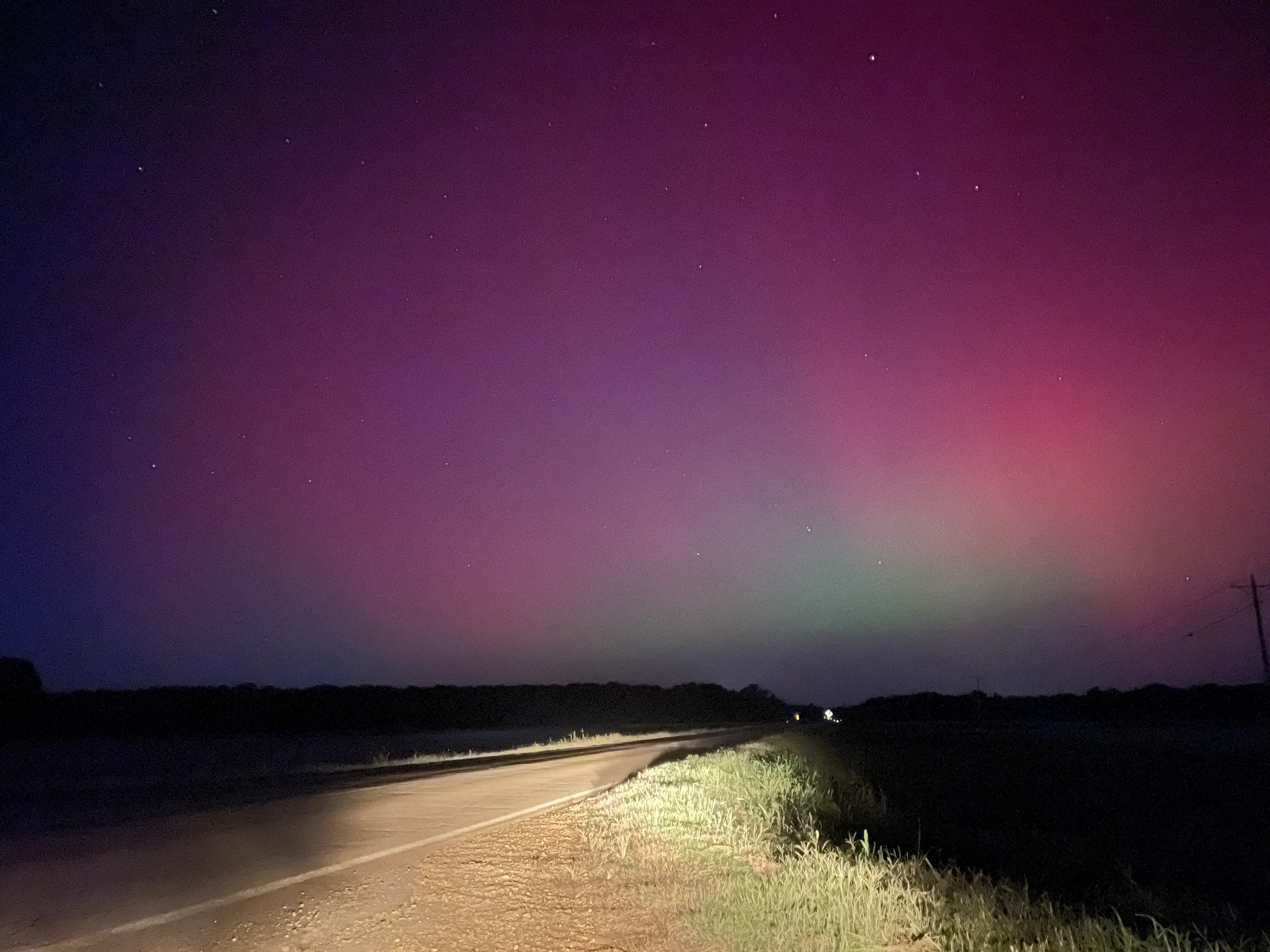
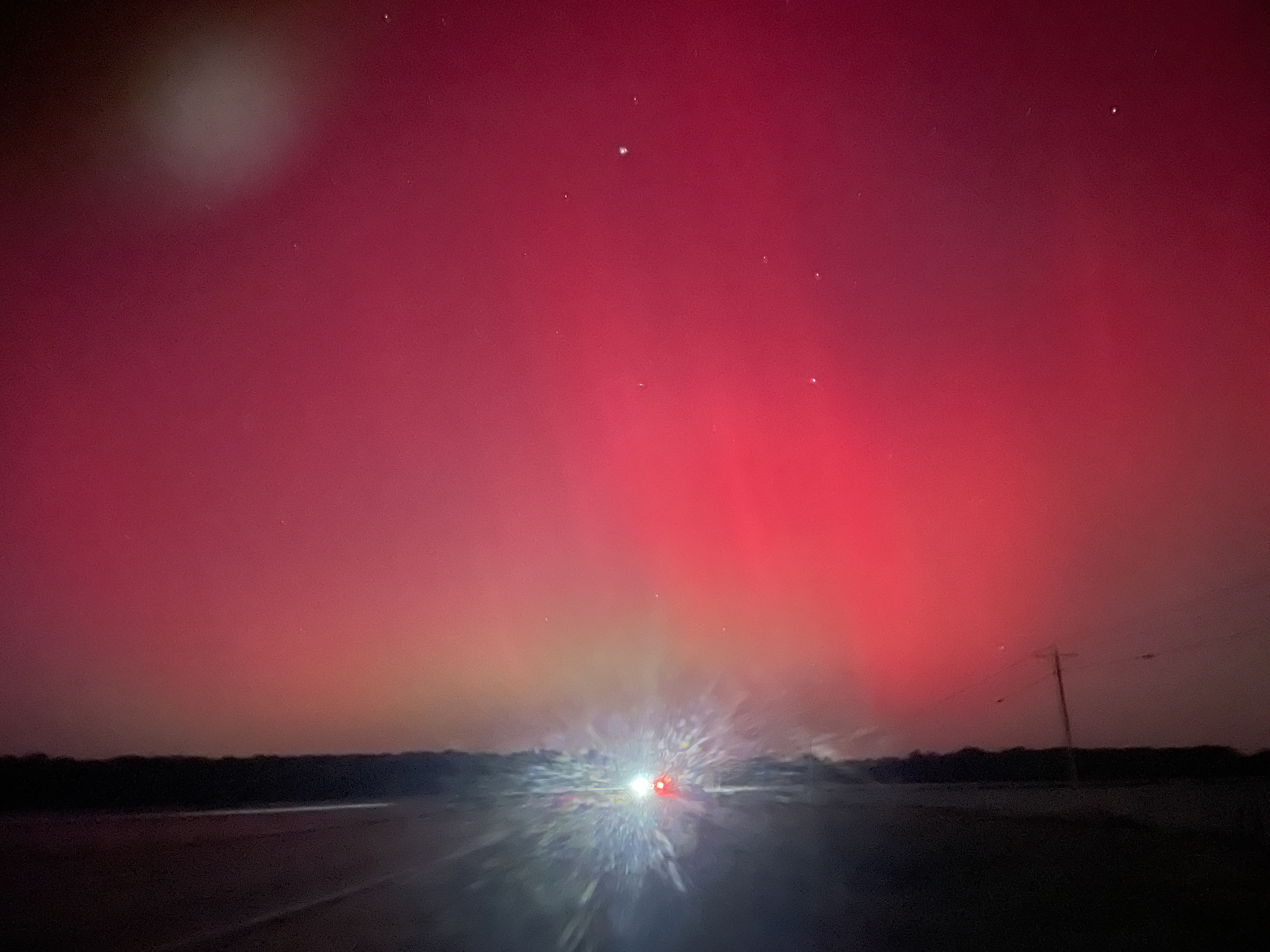
Why Did North Mississippi See the Aurora in October 2024?
1. It Started on the Sun
In early October 2024, the Sun released a coronal mass ejection (CME) — a giant bubble of charged particles and magnetic field — traveling over a million kilometers per hour toward Earth.
2. Arrival at Earth
When the CME reached Earth’s magnetic field on October 10–11, it caused a G4 (Severe) geomagnetic storm. This storm injected huge amounts of energy into Earth’s magnetosphere.
3. How Aurora Happens
Earth’s magnetic field funnels these charged particles toward the polar regions.
The particles collide with gases in our atmosphere:
Oxygen → green or red light
Nitrogen → blue or purple light
These collisions make the sky glow — this is the aurora.
4. Why It Reached Mississippi
Normally, auroras are near the Arctic or Antarctic. But during a strong storm, the auroral oval expands toward the equator. In October 2024, it expanded far enough south for north Mississippi to see pink, red, and green glows.






